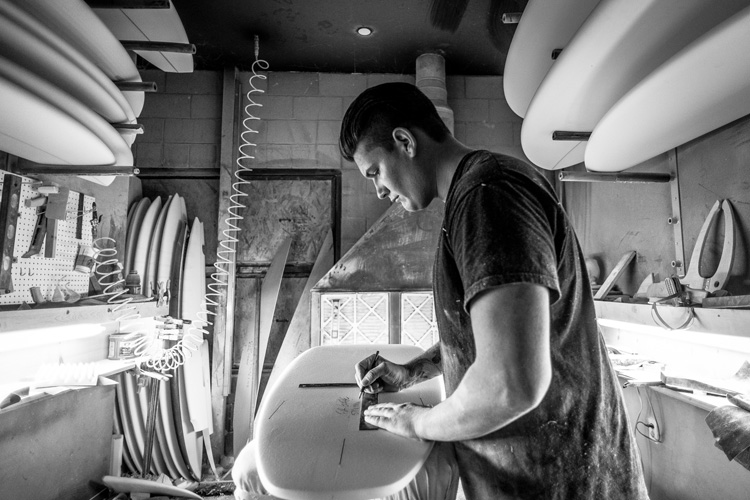Today, you don't need to be a professional surfboard shaper to build a surfboard from scratch. Here's everything you need to know before making your private surfboard shaping room.
Surfboard shaping is an art, but that shouldn't stop you from becoming an amateur artist. Surfers are experimentalists, and we all dream of, one day, producing our own surfboard.
The first thing you need to have is a space where you can go through the standard trial-and-error steps towards perfection. More important than the tools, the equipment, the design, and the materials, it's really crucial to get the right shape room.
Ideally, you would have three different working areas - an exclusive cut-and-shape room for getting the board's outline complete, a glassing room, and a painting room. Just like a factory has zones for cutting the components, assembling multiple parts, and packaging the final product.
Remember that surfboard building always involves fumes, dust, micro-particles, resins, fiberglass, glues, ink and many other harmful liquids. Not only you have to protect yourself from these unhealthy threats, but you must also make sure these substances won't affect those around you.
It can be a garage, a warehouse, a depot, a basement, a cargo container or even an attic. But, here are the boxes you need to tick to get it right - dimensions, lights, wall colors, storage area, air conditioning, racks, and shower:
1. Shaping Bay Dimensions
A surfboard shaping room is a three-dimensional cube where the craftsman will build boards that can go up to 10'. So, ideally, you'll need a slightly rectangular are in the 15' (length), 10' (width), and 11' (height) range.
You can make it in a smaller area, but it will get difficult for you to work in a space smaller than 9'-7'-8'.
Shapers are constantly walking around the board, skinning, cutting, planing, fine-tuning, airbrushing, and laminating their precious treasure, so all the space you can get is truly welcome.
2. Side Lighting
The eight-foot fluorescent lights of the shaping bay should be horizontally and symmetrically fixed to the side walls and mounted on a slightly higher position of that of the surfboard stands.
They should shine the curves of the board so that you can notice the subtle shadows and reflections on the board.
Ideally, lights should be installed between 4'' and 6'' above the blank, so that you can easily identify the areas on the rails, deck, and bottom where you should make adjustments.

3. Wall Colors
Traditionally, the walls of the shaping rooms tend to be painted blue, green or black. It's a matter of preference, but these colors are most popular because they work well with the human eyes when interacting with the white foam of the surfboards.
4. Storage Area
Surfboard shapers need a lot of small and medium-sized tools, and they're continually swapping equipment.
That's why side shelves are important. A well-organized shaping room has plenty of shelving options for hanging and laying hardware within a hand's reach.
A small desk can also be useful for noting down details, drawing innovative shapes, and writing essential reminders.
5. Air Conditioning
Surfboard shaping involves the use of chemicals and potentially hazardous materials. That is why air circulation plays a fundamental role in maintaining a healthy workplace.
Make your air conditioning system is able to extract the fumes and dust that you produce in a fast and efficient way. Large ventilation fans will also help, and will definitely avoid headaches and dry throats.
6. Wall Racks
A smart surfboard/blank wall rack system will allow to keep your foam blanks and completed works ready to be retouched, glassed and sold.
7. Shower
Get cleaned up after a long day of surfboard building. Remove all the powder from your body by installing a simple facility. It could very well be a portable shower and a simple drain system.

Last but not least, use masks. Protect your eyes, skin, ears, and lungs from the toxic products used in the shaping zone. When hand shaping, remember that blanks release gases that will have a negative impact on your health.
Making a surfboard results in the emission of four kilograms of carbon dioxide (CO2), compared to the 24 kilograms of driving a car for an hour.
Finally, and wherever and whenever possible, isolate or cover the roof of your shaping bay with plastic sheets or a drop cloth, so that the small dust particles don't accumulate above your head.


